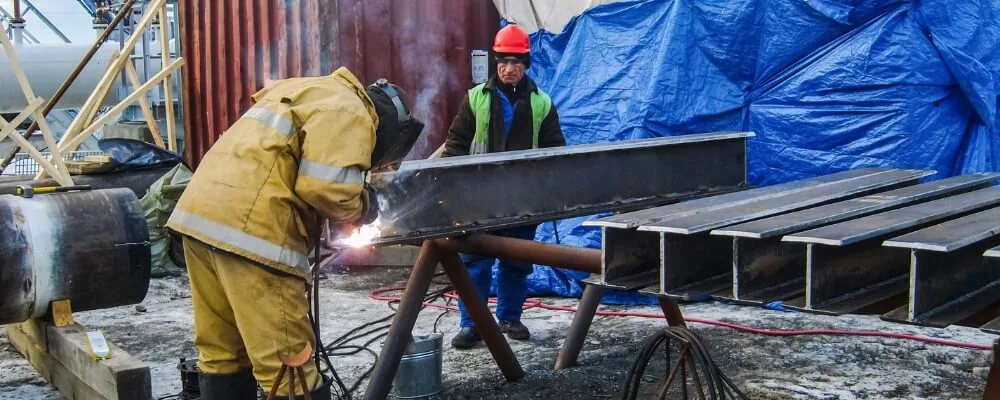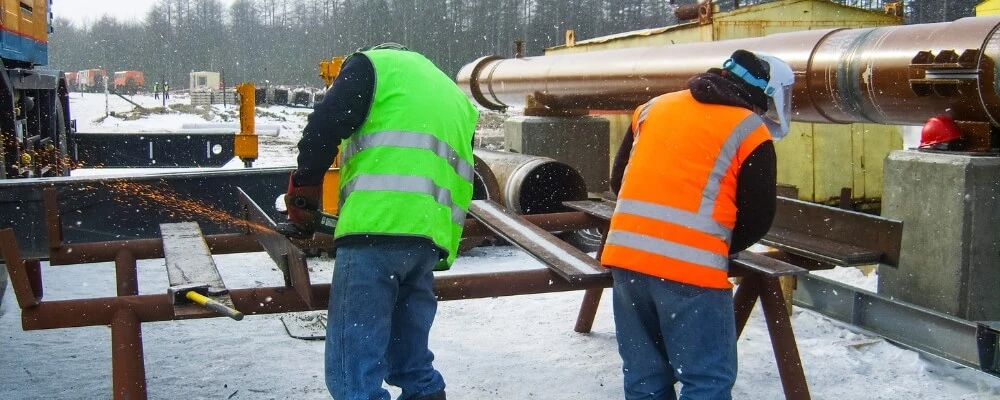In today’s dynamic and often demanding work environment, prioritizing one’s well-being goes beyond the basics of a comfortable chair and periodic breaks. Ensuring health and safety at work is a multifaceted endeavor that intersects with the workplace’s physical, mental, and environmental aspects. Whether you’re stationed behind a desk, working on a bustling factory floor, or navigating the challenges of a construction site, the principle remains the same: your health and safety are paramount.
In this blog, we’ll delve into actionable steps and insights that can be universally applied to ensure you thrive in your professional role and safeguard your physical and mental well-being. Join us as we explore the roadmap to a safer, healthier work life.
Why It’s Important To Ensure Your Health And Safety?
Ensuring one’s health and safety is fundamental for individual well-being and broader societal and economic reasons. Here are some reasons outlining the importance of prioritizing health and safety:
- Personal Well-being: At the most basic level, ensuring your health and safety directly impacts your well-being. Injuries, illnesses, or accidents can lead to pain, discomfort, and, in severe cases, long-term disabilities or even death.
- Long-term Health: Repeated exposure to harmful elements or continuous neglect of one’s health can result in chronic conditions or diseases. For instance, consistent exposure to loud noises without protection can lead to hearing loss over time.
- Financial Implications: Medical treatments and rehabilitation can be expensive. Accidents or illnesses due to personal health and safety neglect can lead to significant medical bills. Additionally, prolonged sickness can result in loss of income due to the inability to work.
- Job Security: Regular absences from work due to health issues can jeopardize one’s position, especially in competitive environments. Consistently prioritizing safety ensures that you remain a reliable and active workforce member.
- Mental Health: A safe and healthy environment reduces stress and anxiety. On the other hand, working in a potentially hazardous environment without proper safety measures can be mentally taxing and lead to issues like burnout, depression, or anxiety.
- Social Implications: Accidents or illnesses don’t just affect the individual. They have ripple effects on families, friends, and communities. The emotional and financial strain of caring for an injured or sick family member can be substantial.
- Economic Productivity: On a broader scale, healthy and safe workers are more productive and contribute more effectively to the economy. High rates of workplace injuries or illnesses can lead to a decline in the overall productivity of a nation.
- Legal and Ethical Responsibility: Many countries have legal frameworks that mandate certain health and safety standards. Not adhering to them can result in legal repercussions. Moreover, it’s an ethical responsibility for everyone, including employers and employees, to ensure a safe and healthy environment.
- Positive Work Culture: A strong emphasis on health and safety cultivates a positive work culture where employees feel valued and cared for. This can lead to higher job satisfaction and lower turnover rates.
- Reputation: For businesses, prioritizing the health and safety of their employees can enhance their reputation among customers, partners, and potential hires. A company known for its high safety standards is more likely to attract and retain talent.
In summary, ensuring health and safety is a multi-faceted concern that impacts individuals personally but also resonates at community, societal, and economic levels. It’s a shared responsibility that reaps benefits for everyone involved.

How Did You Ensure Your Health And Safety At Work?
The modern workplace is an intricate environment with its unique risks and challenges. Ensuring health and safety at work is paramount to fostering a positive workplace culture, reducing accidents, and promoting overall well-being. Implementing proactive measures, staying updated with regulations, and cultivating employee awareness can make all the difference. Here’s how you can ensure your health and safety while at work:
1. Stay Informed
Every region or industry has specific regulations and guidelines to address risks and challenges. Staying updated on these regulations ensures you meet the minimum safety standards. For instance, in the United States, organizations such as OSHA set forth guidelines that employers must adhere to to ensure a safe working environment for their employees. This covers a multitude of sectors ranging from construction to healthcare.
Additionally, attending regular training sessions is of paramount importance. Such training equips employees with the skills and knowledge to identify risks and handle emergencies effectively. Whether it’s fire safety, which teaches individuals how to use firefighting equipment and understand evacuation procedures, or first-aid training that enables employees to offer immediate medical assistance, continuous learning ensures that the workforce is always prepared.
2. Use Personal Protective Equipment (PPE)
Personal Protective Equipment is the first line of defense against potential workplace hazards. Depending on the nature of the job, the type of PPE can vary, but its primary purpose remains consistent – to shield the wearer and reduce exposure to risks. For example, specific masks and gloves prevent skin contact and inhalation in industries with potential exposure to hazardous chemicals.
In construction sites, helmets prevent traumatic head injuries from falling objects. Ensuring the PPE is in good condition is crucial regardless of its type. A regular inspection routine should be in place, as minor wear and tear can significantly compromise the protective equipment’s effectiveness.
3. Practice Good Ergonomics
Ergonomics focuses on ensuring that the work environment aligns with the capabilities and limitations of the workforce. This often refers to the arrangement and use of computers, chairs, and desks in office settings. Proper ergonomic practices, like adjusting the height of chairs and monitors, can drastically reduce the strain on the back, neck, and eyes, leading to fewer musculoskeletal problems.
If employees sit for prolonged periods, regular breaks are encouraged to stretch and change postures, alleviating potential physical strains. Incorporating ergonomic accessories, such as cushioned mouse pads or chairs with proper lumbar support, can enhance comfort and reduce the risk of chronic ailments like carpal tunnel syndrome or lower back pain.
4. Maintain a Clean Work Environment
A tidy and organized workspace is more than just pleasing the eyes; it’s essential for safety. By regularly cleaning and decluttering, employees can minimize the risk of accidents caused by tripping over wires or knocking over stacked items.
Ensuring all equipment is clean, and functions correctly is also vital. This prevents malfunctions that can cause injuries. Also, the proper disposal of waste, especially hazardous, is crucial. Improper disposal can lead to contamination, posing health risks to the workforce and potentially violating environmental regulations.

5. Report and Address Hazards Immediately
Proactivity is key in workplace safety. Suppose an employee notices potential hazards like a wet floor that can cause slips, exposed wiring that poses an electrocution risk, or a malfunctioning machine that can lead to injuries.
In that case, it’s imperative to report it immediately. Prompt reporting ensures that corrective measures are taken timely, preventing accidents. A workplace culture that encourages open communication about such risks ensures that safety remains a priority and empowers employees to take ownership of their environment.
6. Avoid Shortcuts
Sticking to standard operating procedures is pivotal in any work environment. While shortcuts might seem tempting, as they can often save time or appear more efficient, they often bypass essential safety steps designed to protect workers. These procedures are usually implemented because of historical incidents or risks identified by experts.
By circumventing them, workers expose themselves and others to unnecessary hazards. A few minutes saved is never worth the potential for injury or even loss of life.
7. Stay Fit and Healthy
Physical wellness is integral to workplace safety. Regular exercise boosts stamina and strength and enhances overall well-being, making it easier for individuals to perform tasks without straining. For instance, strong core muscles can provide better balance, reducing the risk of falls.
Furthermore, a balanced diet ensures the body receives the necessary nutrients, supporting cognitive functions, improving concentration, and reducing the chances of fatigue-induced errors. Adequate hydration, too, is essential. Dehydration can lead to dizziness, fatigue, and impaired judgment, which can be hazardous in many work settings.
8. Manage Stress
Chronic stress is a silent enemy in the workplace. Elevated stress levels over extended periods can lead to various health issues, including hypertension and compromised immune function. From a safety perspective, high stress levels can diminish alertness, slow reaction times, and impair decision-making. This increases the chances of accidents, especially in high-risk environments.
Employees should seek methods to manage and mitigate stress effectively. This could range from mindfulness practices like meditation to seeking professional counseling. Periodic breaks throughout the day can also help in resetting and reducing stress.

9. Practice Safe Lifting Techniques
Improper lifting is a common cause of workplace injuries, particularly strains and sprains. When lifting any object, it’s crucial to use proper form. Bending at the knees and hips allows the strong leg muscles to bear the brunt of the lift rather than the more vulnerable lower back. Keeping the object close to the body provides better balance and reduces strain.
Lifting while lifting can place immense pressure on the spine, so moving the feet to turn is imperative instead of twisting the torso. Adherence to these techniques reduces the risk of musculoskeletal injuries.
10. Promote a Culture of Safety
A safe work environment isn’t just about protocols and equipment; it’s also about cultivating a culture where safety is valued and prioritized. Encouraging open communication ensures that all employees, irrespective of their designation, feel empowered to voice concerns or suggest improvements without fear of reprisal. Active participation in safety committees allows employees to take an active role in shaping safety policies.
Additionally, recognizing and celebrating safety milestones serves a dual purpose – it reinforces the importance of safety and boosts morale. Sharing best practices ensures that all employees benefit from their peers’ collective experience and wisdom, leading to a continuously improving and safer workplace.
Conclusion
In the intricate dance of professional life, where deadlines meet demands and challenges test resilience, it’s easy to sideline our most vital asset: well-being. Ensuring our health and safety at work isn’t a mere tick-box exercise but a continuous commitment to ourselves and those around us. By staying informed, using protective equipment, practicing ergonomics, and cultivating a safety culture, we protect ourselves and contribute to a holistic, productive, and positive work environment.
Remember, in the grand tapestry of our careers, the threads of health and safety hold everything together. As you progress in your professional journey, carry with you the understanding that prioritizing your well-being is the bedrock upon which all other successes are built. Stay safe, stay vigilant, and always prioritize your well-being. Because at the end of the day, the most valuable thing we bring home from work isn’t a paycheck—it’s ourselves, whole and healthy.

